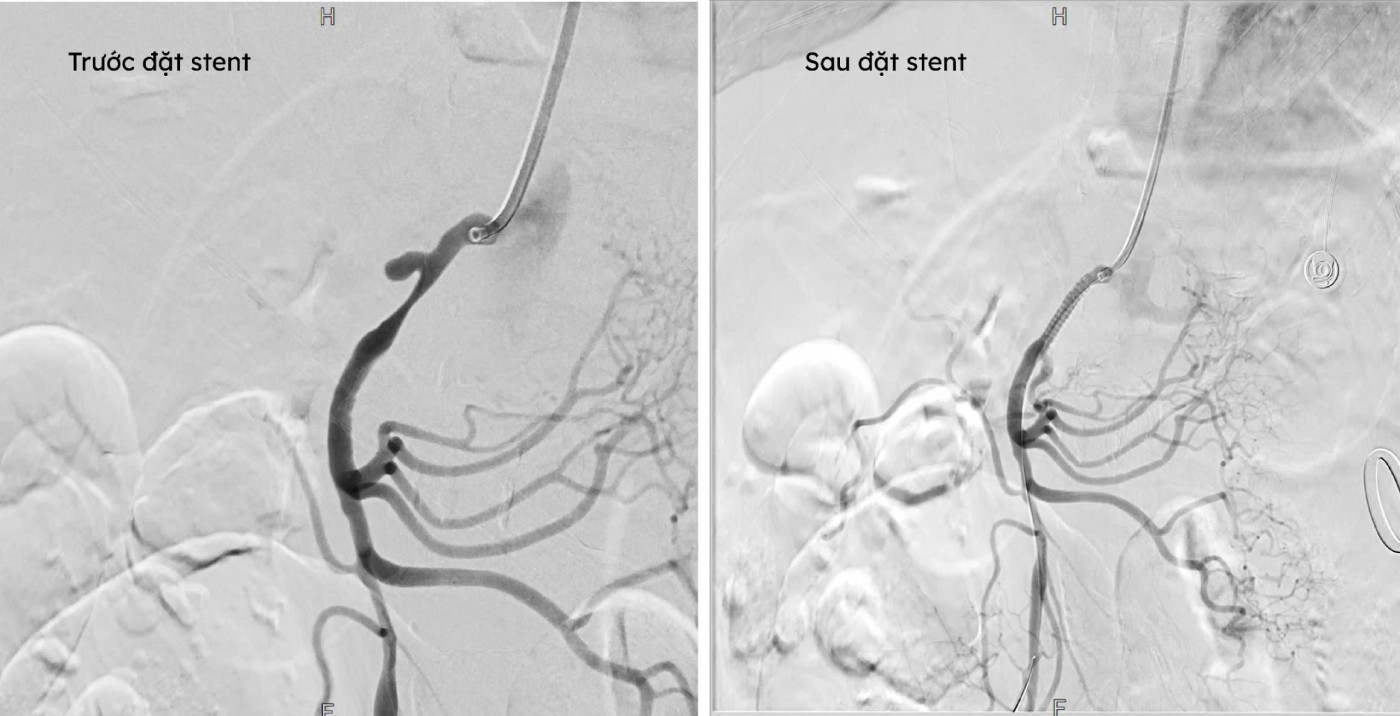The patient is Mr. N.M.T (70 years old, Co Do district, Can Tho city), suffering from epigastric abdominal pain, the pain lasted for several hours, and the frequency of pain increased. The family took the patient to a large hospital in the center of Can Tho city. Here, the doctor diagnosed the patient with abdominal pain and suspected vascular injury of the superior mesenteric artery.
A month passed, the patient's abdominal pain continued. The family decided to take the patient to S.I.S Can Tho International General Hospital for treatment.

After performing the necessary paraclinical tests, the hospital doctors discovered that the patient had a rare disease - superior mesenteric artery dissection with a large aneurysm and large dissection size.
Specialist Doctor Ngo Minh Tuan - Head of the Department of Diagnostic Imaging, SIS Can Tho International General Hospital - said that this patient's superior mesenteric artery aneurysm dissection disease has only about 56 people in the world.
“This is a rare disease, especially in people with underlying hypertension. Mesenteric aneurysms are at risk of rupture, bleeding, reducing blood flow to the intestine, leading to intestinal ischemia, infarction, and the patient is likely to die if not treated promptly,” said Dr. Tuan.
The doctors decided to perform a quick, effective and gentle endovascular intervention for the patient. With the accurate diagnostic DSA image, the doctors decided to place a stent across the dissection site, helping to prevent dissection and compress the damaged tear area. At the same time, when the stent opens, the blood vessel also opens, returning the blood vessel to its normal size.

After 30 minutes of intervention, the team completely eliminated the patient's superior mesenteric artery aneurysm. One day after the intervention, the patient's health condition was stable, the abdominal pain was gone, and he was able to eat, move, and defecate normally.
According to Dr. Tuan, the world has not yet found a specific cause of superior mesenteric artery aneurysm dissection. However, according to statistics of more than 50 cases, the disease is often found in patients with risk factors such as: long-term smoking, obesity, hyperlipidemia, hypertension, atherosclerosis, especially patients with trauma.
Doctors also recommend that people pay attention when their body shows unusual symptoms and go to a qualified medical facility for examination to avoid detecting the disease too late, which will cause difficulties in the treatment process.










